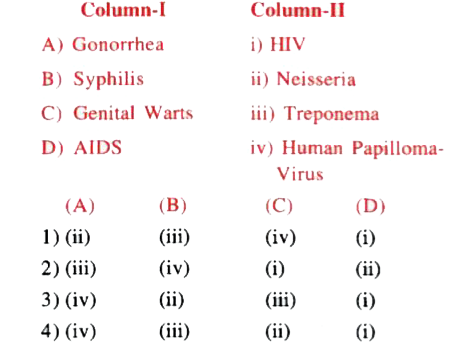Stomata develops from
Dermal tissue
Ground tissue
Hypodermal tissue
Acessory tissue
The correct Answer is:A
Step-by-Step Solution:
1. Understanding Stomata Development: Stomata are small openings on the surface of leaves and stems that facilitate gas exchange in plants. To determine where stomata develop from, we need to look at the tissue types involved in their formation.
2. Identifying the Tissue Type: Stomata are formed from a specific type of tissue known as dermal tissue. Dermal tissue is the outermost layer of cells in plants and plays a crucial role in protecting the plant and regulating gas exchange.
3. Role of Dermatogen/Protoderm: The dermatogen, also referred to as protoderm, is the layer of cells that gives rise to the dermal tissue. It is a part of the meristematic tissue, which is responsible for the growth and development of various plant structures.
4. Formation of Dermal Layers: The protoderm divides to form three distinct layers of dermal tissue:
- Epidermis: The outermost layer that protects the plant.
- Endodermis: A layer that regulates the movement of water and nutrients.
- Hypodermis: A supportive layer beneath the epidermis.
5. Stomata Formation: The stomata specifically arise from the epidermis layer of the dermal tissue. The cells in this layer can differentiate into guard cells, which surround the stomatal pores and control their opening and closing.
6. Conclusion: Therefore, the correct answer to the question "Stomata develops from" is dermal tissue.
Final Answer: Stomata develop from dermal tissue.
---
- Epidermis: The outermost layer that protects the plant.
- Endodermis: A layer that regulates the movement of water and nutrients.
- Hypodermis: A supportive layer beneath the epidermis.
Topper's Solved these Questions
- HISTOLOGY AND ANATOMY OF FLOWERING PLANTSBook:AAKASH SERIESChapter:HISTOLOGY AND ANATOMY OF FLOWERING PLANTSExercise:EXERCISE - III (PREVIOUS AIPMT/NEET QUESTIONS)
Explore 24 Videos
- HISTOLOGY AND ANATOMY OF FLOWERING PLANTSBook:AAKASH SERIESChapter:HISTOLOGY AND ANATOMY OF FLOWERING PLANTSExercise:EXERCISE - I (SECONDARY GROWTH)
Explore 45 Videos
- ENVIRONMENTAL ISSUESBook:AAKASH SERIESChapter:ENVIRONMENTAL ISSUESExercise:Exercise-III (Previous AIPMT/NEET Questions)
Explore 41 Videos
- HUMAN HEALTH DISEASEBook:AAKASH SERIESChapter:HUMAN HEALTH DISEASEExercise:EXERCISE - III (PREVIOUS AIPMT/NEET QUESTIONS)
Explore 56 Videos
Similar Questions
Cortex is the region found between
View SolutionDedifferentiation occurs during the formation of
View SolutionWhich of the following in sewage treatment removes suspended solids?
View SolutionMatch the following sexually transmitted diseases (Colum-I) with their causative agent (Column -II) and select the correct option.

View SolutionLenticels differ from stomata in being
View SolutionConsider the following anatomical adaptions.
I. stomata sunken and covered by hair.
II. stomata absent or functionless.
III. conducting and mechanical tissues well-developed.
IV. aerenchyma well-developed.
Choose the correct statement regarding xerophytes .
View SolutionHow are stomata differentiated from the surrounding epidermal cells ?
View SolutionFeatures like needle shaped leaves, thick cuticle, sunken stomata and development of male and female strobili on the same plant, are present in :
View SolutionStomata develops from
View SolutionWhat are stomata? Give two functions of stomata.
View SolutionLenticels differ from stomata in being
View SolutionTransportation | | Structure OF stomata | | mechanism OF opeing and closing OF stomata
View SolutionWhat are stomata? Give two functions of stomata.
View SolutionFeatures like needle shaped leaves, thick cuticle, sunken stomata and development of male and female strobili on the same plant, are present in :
View Solutionरंध्र क्या है ? रंध्रों के दो कार्य बताइए।
View SolutionStomata develop from
View Solution
